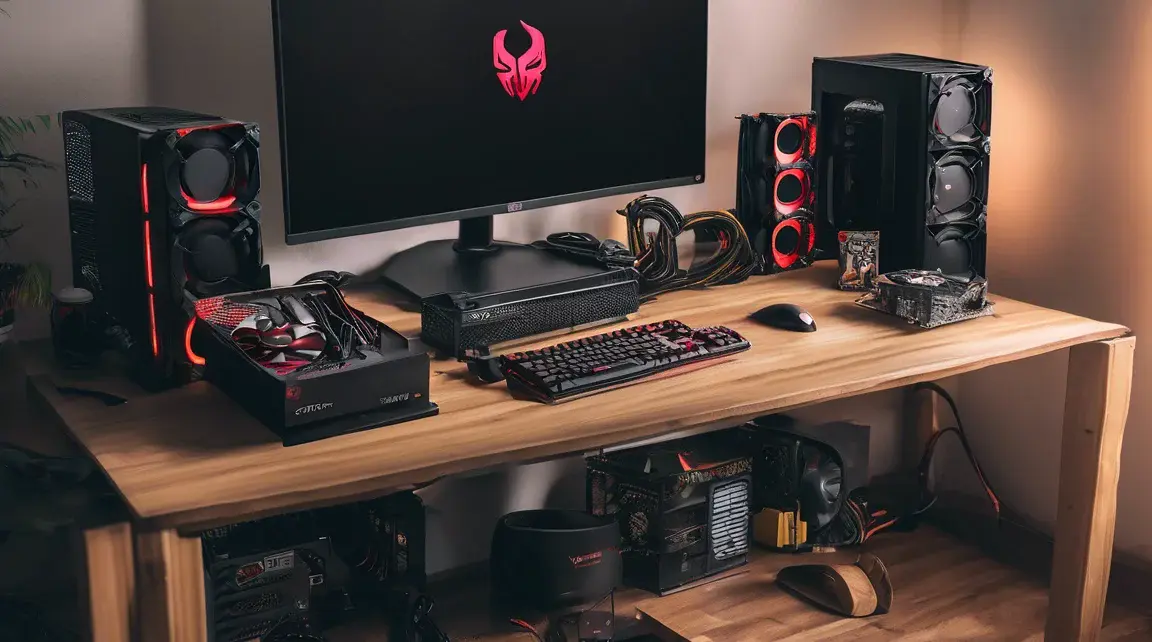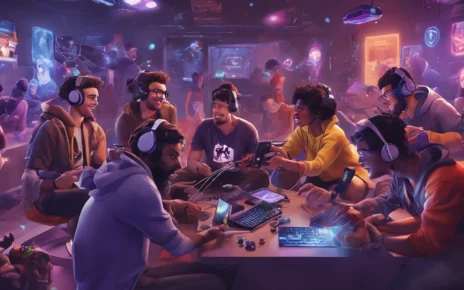Building a gaming PC on a budget might seem overwhelming, but once you break down the essentials, it’s entirely manageable. With the right approach, you can build a powerful system without spending a fortune. This guide will walk you through selecting budget-friendly components, sourcing deals, assembling your rig, and optimizing performance for the best gaming experience.
Why Build a Gaming PC Instead of Buying a Prebuilt?
Before diving into the building process, you might wonder: Why not just buy a prebuilt gaming PC? While prebuilt systems offer convenience, they often come with trade-offs:
- Higher Costs – Prebuilt systems usually have higher markups due to labor and branding.
- Lower Customization – You might end up with parts that aren’t optimized for gaming.
- Cheaper Components – Manufacturers sometimes cut corners by using lower-quality power supplies, motherboards, or cooling solutions.
By building your own PC, you ensure better performance, upgradeability, and value for money while learning a valuable skill.
Essential Components for a Budget Gaming PC
1. CPU: The Brain of Your Build
The central processing unit (CPU) is your PC’s brain. For budget builds, focus on CPUs that offer the best performance per dollar. Some previous-generation CPUs provide excellent power at a reduced cost. Look for models with strong core counts and clock speeds to handle gaming and multitasking efficiently.
Best budget CPU options:
- AMD Ryzen 5 5600X – Great for gaming and multitasking.
- Intel Core i5-12400F – Excellent balance of price and performance.
- AMD Ryzen 3 3200G – Solid entry-level option with integrated graphics.
2. GPU: Powering Your Graphics
The graphics processing unit (GPU) is crucial for smooth gameplay. While high-end GPUs can be expensive, there are mid-range and budget-friendly options that can run most games on medium to high settings. Research benchmarks to find the best price-to-performance ratio.
Best budget GPU options:
- EVGA GeForce GTX 1660 – Strong performance for 1080p gaming.
- AMD RX 6600 – Excellent value for modern titles.
- Intel Arc A770 – A great alternative with competitive pricing.
3. RAM: Finding the Sweet Spot
For most gaming setups, 16GB of RAM is ideal—it ensures smooth gameplay without overspending. Stick to reputable brands and prioritize dual-channel memory kits for better performance.
Recommended RAM kits:
4. Storage: SSD vs. HDD
A solid-state drive (SSD) drastically reduces load times and improves system responsiveness. If you need extra storage for games, pairing a small SSD (for OS and key games) with a larger hard disk drive (HDD) is a budget-friendly solution.
5. Motherboard: The Backbone of Your Build
A reliable motherboard ensures all your components work together. Choose one that supports future upgrades, has the right socket for your CPU, and includes enough RAM slots.
6. Power Supply Unit (PSU): Reliable Power Delivery
Your power supply unit (PSU) is critical for system stability. Avoid cheap, no-name brands and opt for at least an 80 Plus Bronze-rated PSU to ensure efficiency and longevity.
7. Case and Cooling: Keeping Things Cool
Your case should offer good airflow to prevent overheating. Many budget cases come with pre-installed fans, but you can add additional cooling if needed. Proper ventilation ensures stable performance and longevity.
Choosing the Right Components: Balancing Performance and Cost
When selecting parts for your budget gaming PC, strategic spending is key. Here’s how to allocate your budget wisely:
- CPU: Look for last-gen models that still deliver great performance.
- GPU: Prioritize mid-range GPUs that offer solid frame rates without breaking the bank.
- RAM: 16GB is the sweet spot; avoid overspending on unnecessary capacity.
- Storage: A small NVMe SSD for speed and an HDD for bulk storage is a great combo.
- Motherboard: Don’t overspend on unnecessary features; ensure compatibility with your CPU and future expansion.
- PSU: Get a reliable brand with enough wattage for your components and potential upgrades.
- Case and Cooling: Choose a case with good airflow and cooling options.
Where to Buy Budget-Friendly PC Parts
Scoring great deals on components takes patience and smart shopping. Here are some tips:
- Shop Online: Websites like Amazon, Newegg, and Micro Center often have competitive pricing.
- Look for Sales: Black Friday, Cyber Monday, and back-to-school sales offer deep discounts.
- Check Local Stores: Some in-store deals are not available online.
- Sign Up for Alerts: Subscribe to retailer newsletters for exclusive discounts.
- Read Reviews: Always check benchmarks and user feedback before purchasing.
- Consider Used Parts: Platforms like eBay and Reddit’s r/hardwareswap can offer great deals on used components.
Step-by-Step Guide to Assembling Your Budget Gaming PC
Once you’ve gathered your components, it’s time to build! Follow these steps:
1. Prepare Your Workspace
- Use a clean, well-lit table.
- Gather essential tools like a screwdriver.
- Consider using an anti-static wrist strap.
2. Install the CPU
- Place the motherboard on a flat surface.
- Gently install the CPU, ensuring proper alignment.
- Apply thermal paste (if needed) and attach the cooler.
3. Install RAM and Storage
- Insert RAM sticks into the designated slots until they click.
- Mount your SSD or HDD and connect power/data cables.
4. Mount the PSU and Connect Cables
- Secure the power supply unit (PSU) in its designated spot.
- Connect the main power cables to the motherboard and other components.
5. Install the GPU
- Insert the GPU into the PCIe slot.
- Secure it with screws and connect the necessary power cables.
6. Cable Management and Final Check
- Organize and secure cables for better airflow.
- Double-check all connections before closing the case.
7. Power On and Install Software
- Plug in your PC, press the power button, and enter the BIOS.
- Install your operating system (Windows, Linux, etc.) and drivers.
Final Thoughts: Building a Budget Gaming PC That Lasts
Building a gaming PC on a budget is all about making smart choices. By carefully selecting components, shopping strategically, and assembling your system correctly, you can create a gaming rig that delivers excellent performance without overspending. Stay up-to-date with deals and future upgrade opportunities to keep your setup competitive for years to come. Happy gaming!




